For this project, we were required to create a training needs analysis, based on a previous student's work. The instructor had us add a new section to the analysis every week, to culminate in a project that reached about 15 pages or so. The analysis was based on a nutritional course, which we were to utilize as the foundation of our project and modify according to the audience we selected. I chose to go with developing a project for a compulsory nutrition course at a college or university, that would be held towards the beginning of the student's freshman year. The audience would be freshmen students, ranging in age, but most likely from about 18-25. The audience that would have been reviewing the actual training needs analysis, however, would have been project sponsors, school administrators, the school's Education department, and SME's (Subject Matter Experts) involved with the development of the curriculum.
The project was worked on all month long. Below are some images from the areas we were asked to add week by week.
Week 1:
Revise and improve the given training needs analysis using Word’s Track Changes feature. Here, we simply edited the original work, correcting grammar mistakes and adding information as we saw fit.

This is an example of some of the edits I made to the original work from a previous student. This model would then be taken in later weeks and edited for my chosen audience.
Week 2:
Add a Data Planning section and a Content Outline & SME Checklist section, creating surveys and checklists for the people involved (namely, SME’s). For this week, we developed surveys for the SME's. Below are the final versions of these elements.
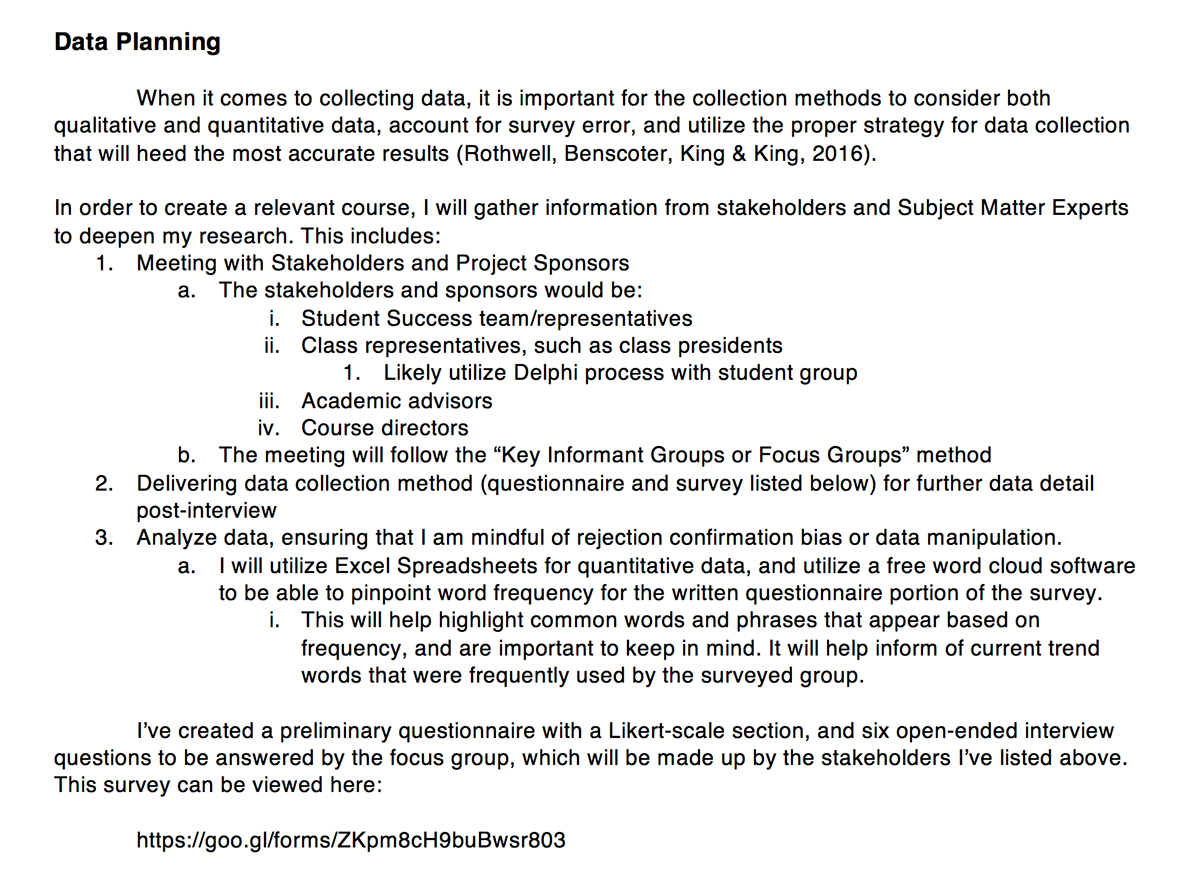
Data Planning Section, describing my data collection methods. The clickable link to the Google Survey is here: https://goo.gl/forms/ZKpm8cH9buBwsr803
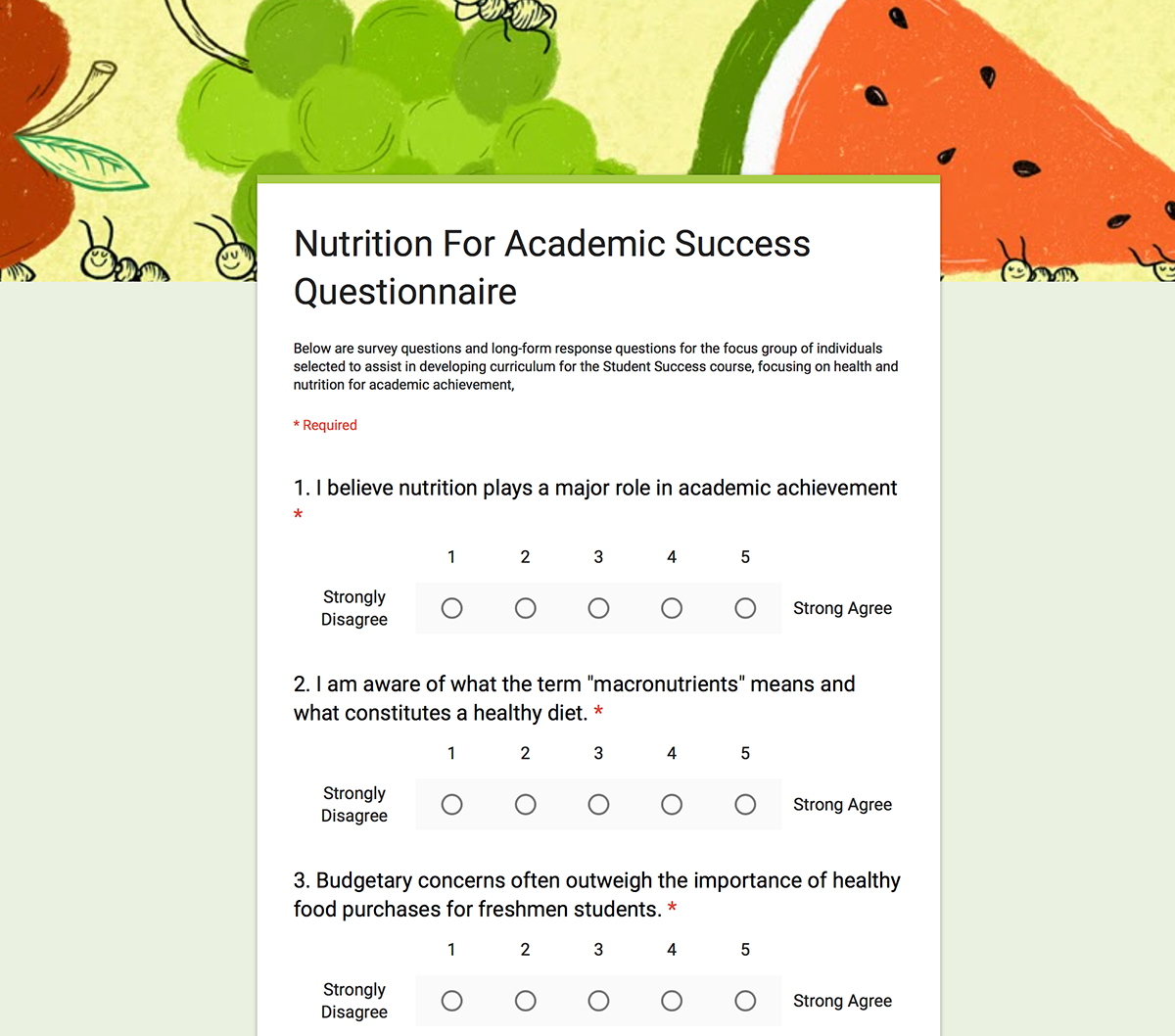
Here is an example of the types of survey questions created on Google Surveys for the SME's.

Part 1 of the Content Outline, intended to be a bird's eye view of the project dissemination and planned deliverables.

Part 2 of the Content Outline, again intended to be a bird's eye view of the project dissemination and planned deliverables.

SME Checklist developed for the Subject Matter Experts that would be acting as advisors for the development of this curriculum. They were identified as volunteer students (class officers, for example), academic advisors, nutrition specialists, and project sponsors themselves.
Week 3:
Define the instructional design model the project was based on, create a text-based storyboard and 60-second training video for one aspect of the prospective course, and evaluate and improve the assessment planning section, adding assessment questions for the hypothetical audience.

The description of the Gradual Release Model, which was the selected learning model that anchored the project. All design decisions and content order was founded on the GRM's pattern of "I do, we do, you do together, you do alone."
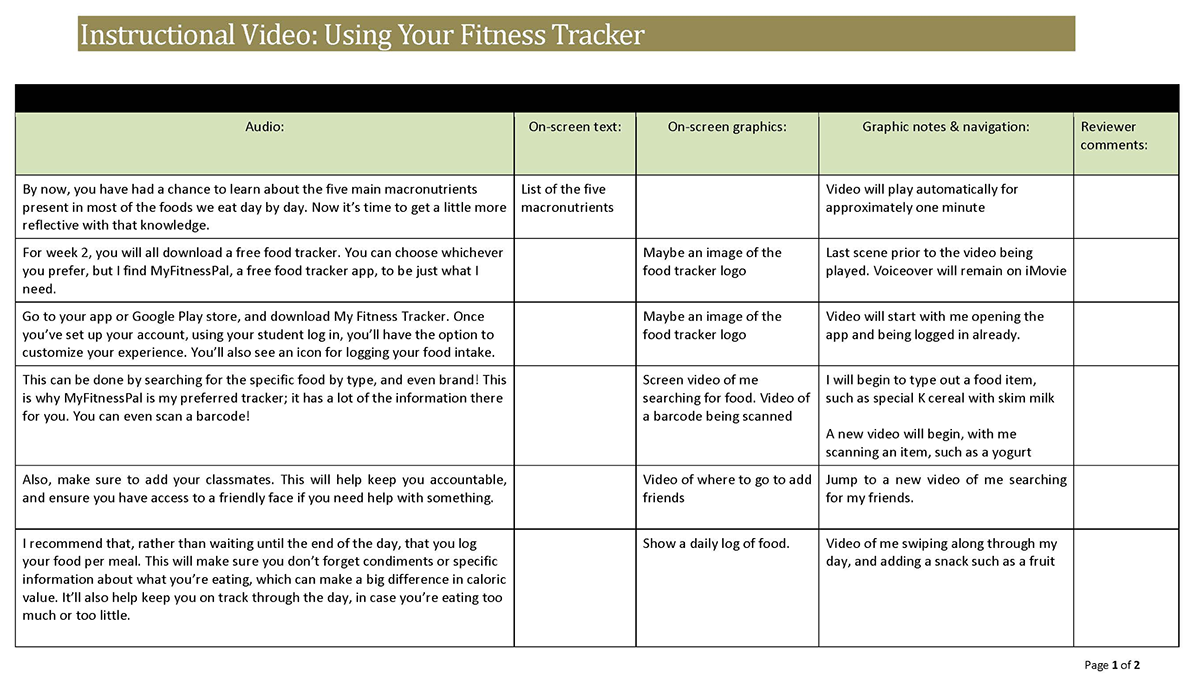
This is the text-based storyboard that was utilized to plan for the one-minute instructional video due week 3. This was where the script and order was planned, as well as the graphic assets and what would be showing on screen, and when.
Here is an instructional video I developed for the assignment. One of the deliverables for the curriculum included the students using a free food tracker to track their nutritional intake and exercise. Here, I give a brief description of the MyFitnessPal app, and the helpful features the students are to use for the assignment.

Above are the open- and closed-ended assessment questions developed for the student. I chose to go with True/False answers, and multiple choice, rounding out the questions with short-answer responses.
Week 4:
Add an Evaluation Planning and Implementation Planning section to the analysis, communicating how one would evaluate each deliverable and how the course as a whole would be disseminated. This week was the culmination of the entire month’s work. Here, I included a formative and a summative evaluation plan. Formative evaluations would occur just before, and even during, the curriculum launch, in order to help develop the actual content. Summative evaluation would be after the class or curriculum has been delivered and the students have been assessed. This would measure the success of the curriculum, and identify areas of opportunity.
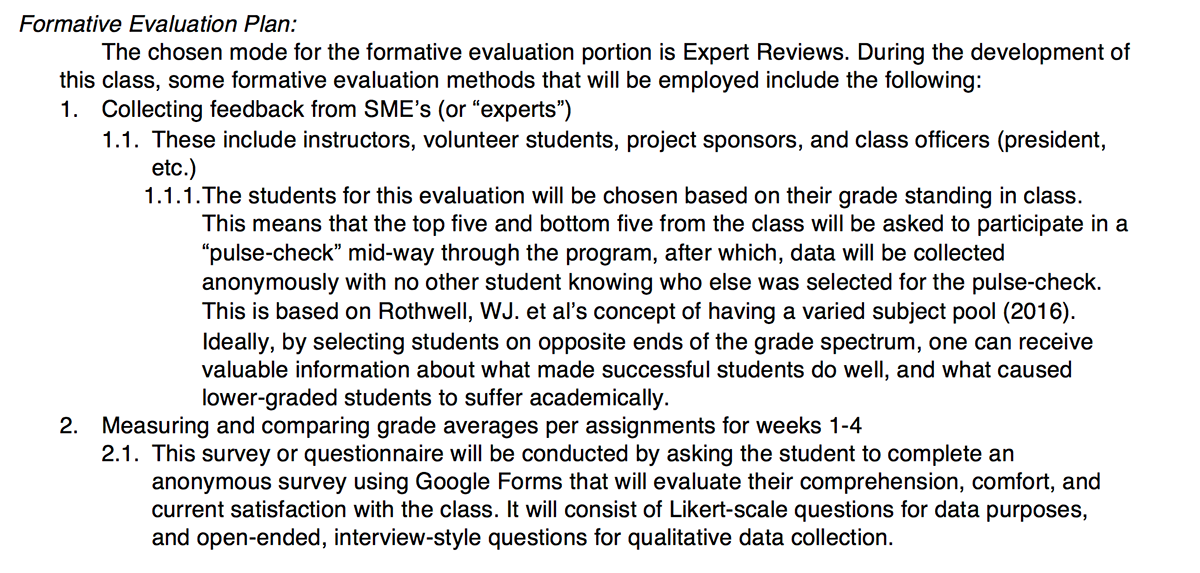
A detailed explanation of the Formative Evaluation plan.

A detailed description for the Summative Evaluation plan, including a description of the Success Case Model. This was the chosen evaluation model for its benefits in c collecting qualitative data, as stated above.
Ultimately, the biggest area of improvement for myself and my fellow classmates ended up being the development of the Instructional Objectives and Learning Outcomes. They had to be formulated using Bloom's Taxonomy and the ABCD model (Audience, Behavior, Condition, Degree).

Learning Outcomes and their corresponding Instructional Objectives, Part 1.
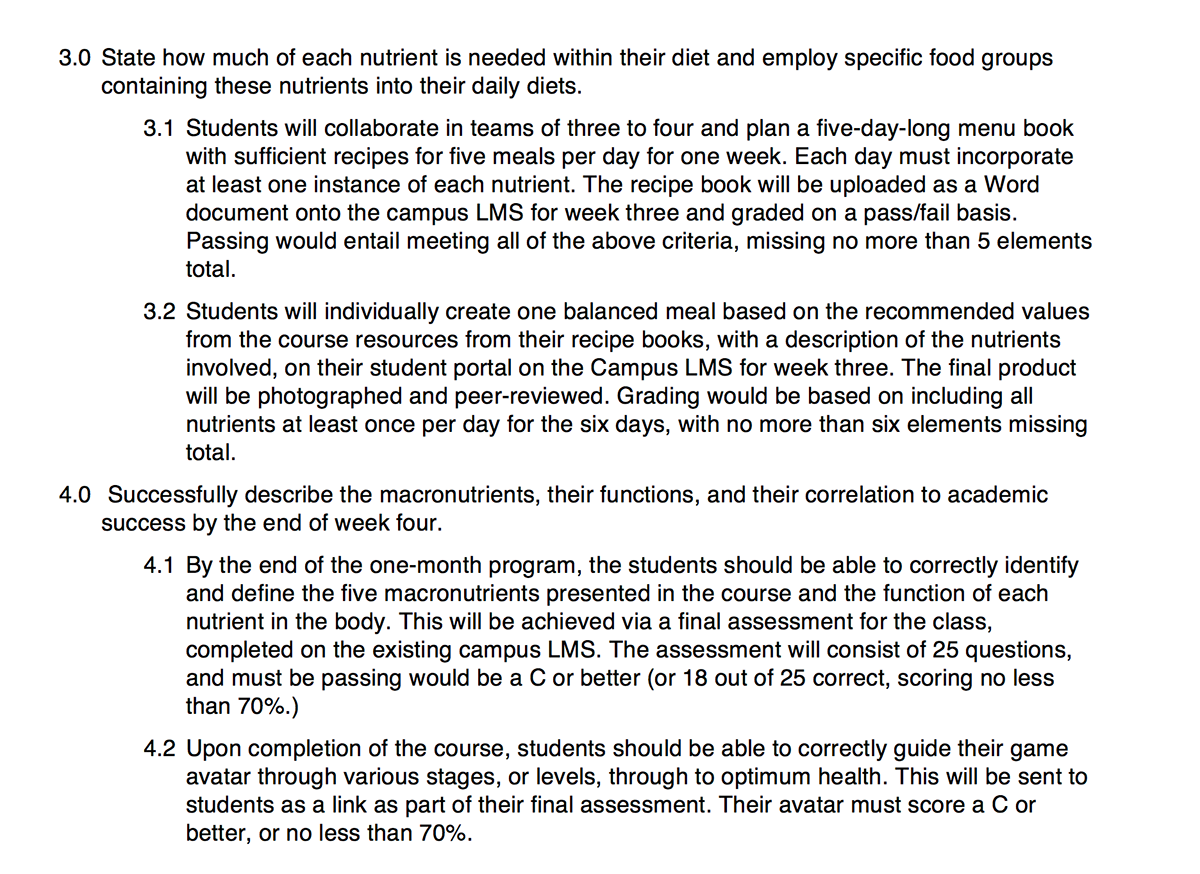
Learning Outcomes and their corresponding Instructional Objectives, Part 2.


